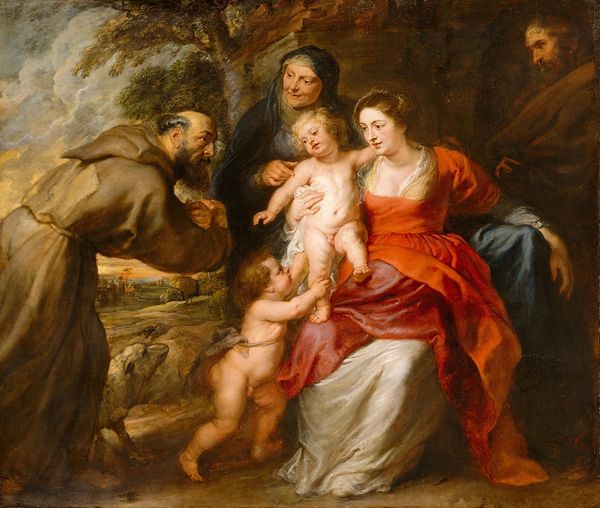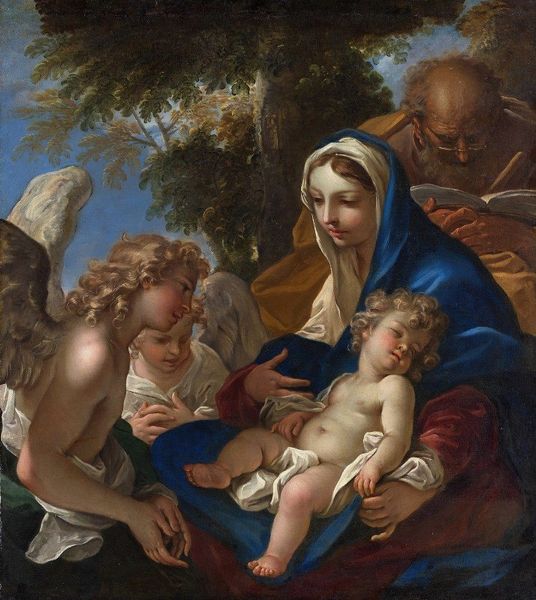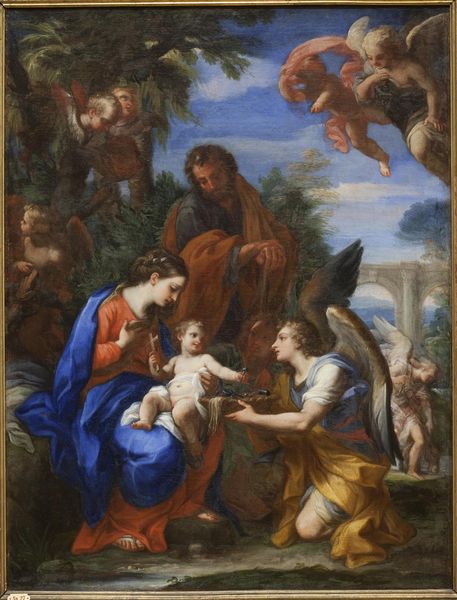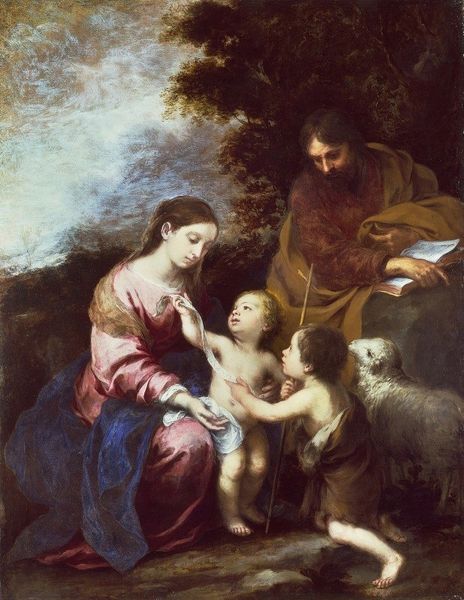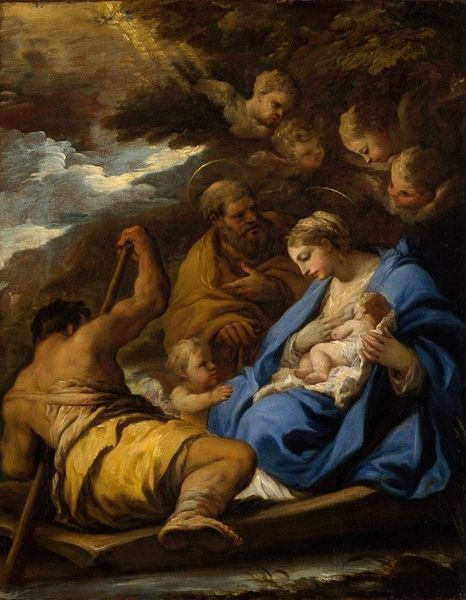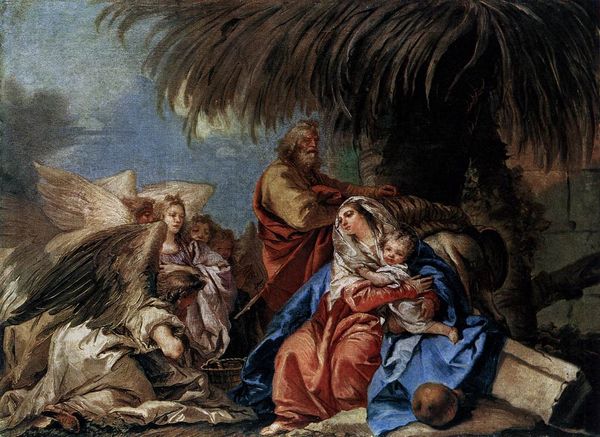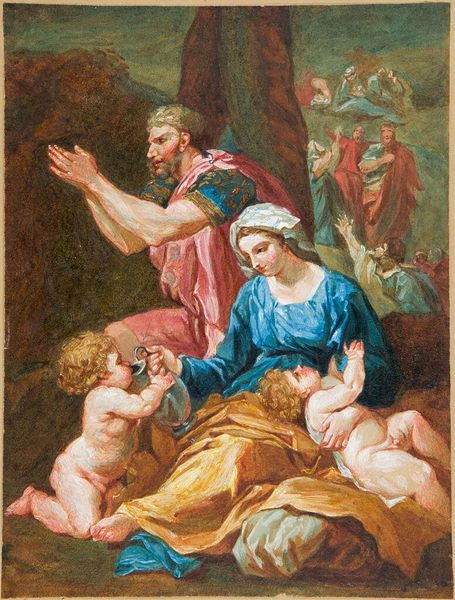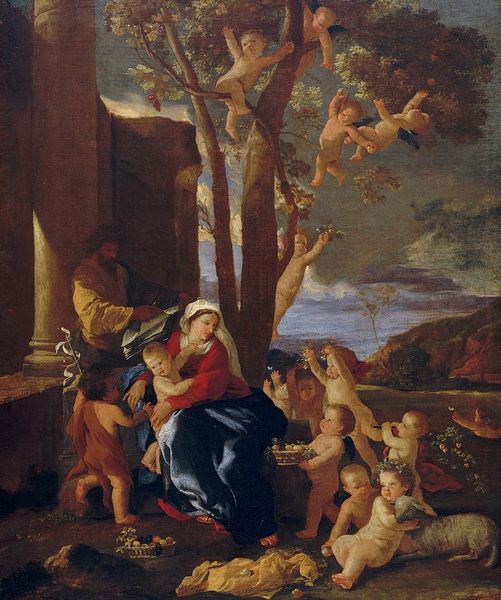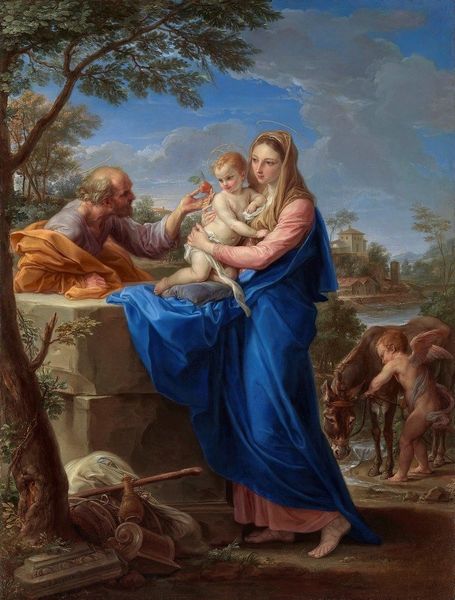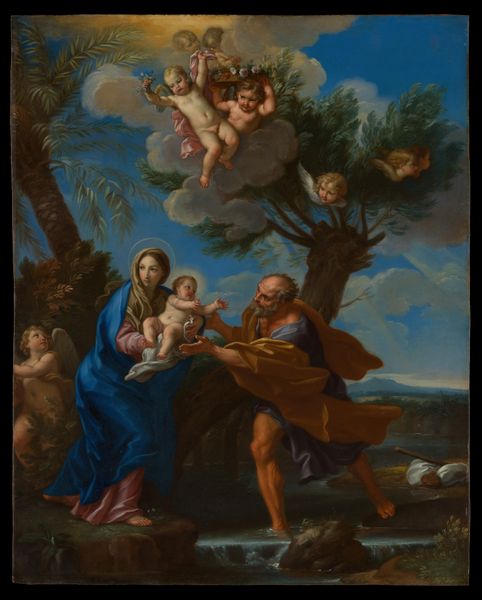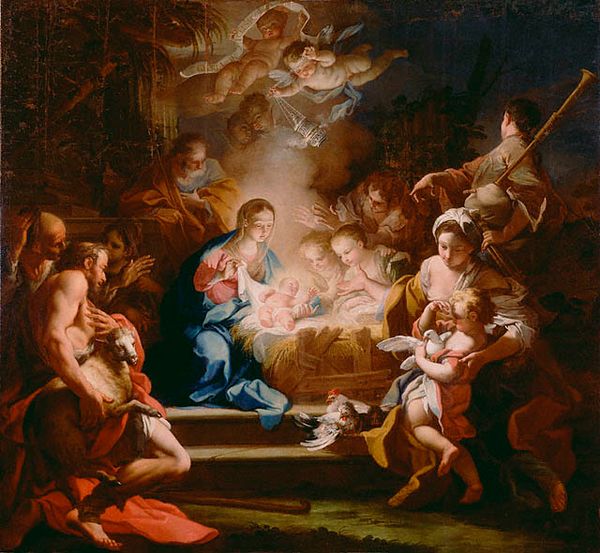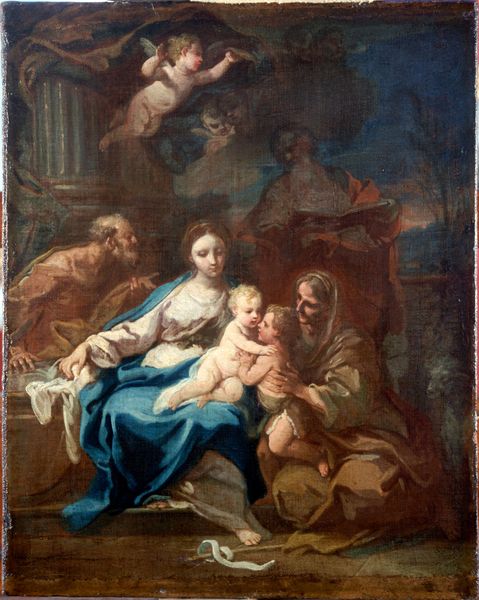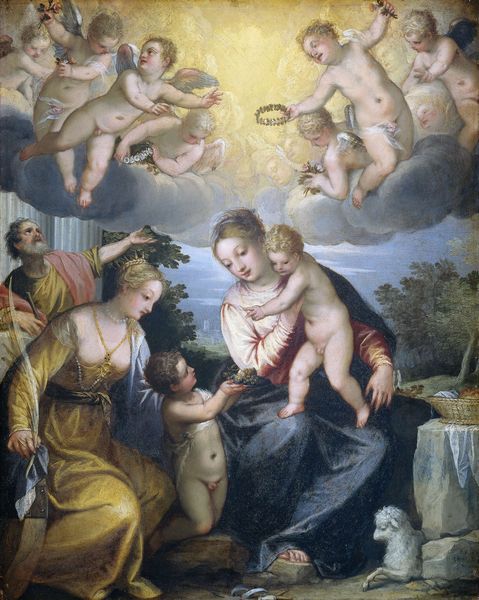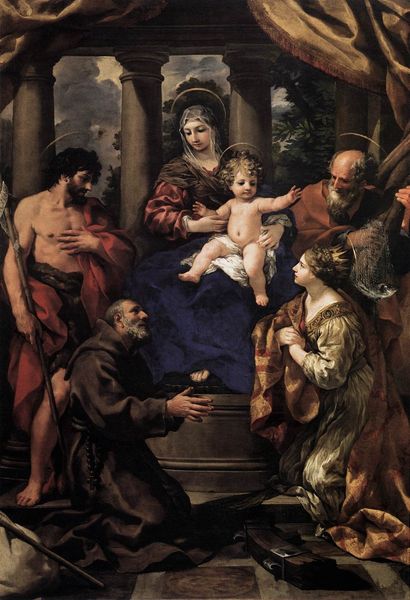
painting, oil-paint
#
portrait
#
allegory
#
baroque
#
painting
#
oil-paint
#
landscape
#
figuration
#
oil painting
#
underpainting
#
history-painting
#
realism
Copyright: Public Domain: Artvee
Curator: What a vibrant and dynamic piece. We are looking at Peter Paul Rubens’s “The Holy Family Under An Apple Tree,” painted around 1632. The oil on canvas exemplifies the energy and grandeur of the Baroque era. Editor: It's instantly engaging! There is a sense of overflowing abundance here; so many figures, textures, and sources of light—a kind of paradise unfolds before us. Curator: Rubens was a master of imbuing religious scenes with humanity. It's worth noting how his Antwerp workshop was a massive operation. So while attributed to him, works like this likely involved several assistants. That impacts how we interpret it as an expression of individual genius, versus a more collaborative statement. Editor: True. But even so, the visual language employed remains consistent with Rubens’ personal iconography. Look at the apple tree itself: It serves as a loaded symbol of both temptation and, in this context, a foreshadowing of Christ's redemption from original sin. Note, too, how Joseph is included watching over them at a higher place of relative prominence as part of the narrative. Curator: Right. The positioning and gestures carry heavy significance. Also consider how the work functions as a cultural object. During the Counter-Reformation, the Catholic Church strategically used art to reassert its authority and Rubens was among those tasked to bring religious ideas alive for a broad audience, especially in the Spanish Netherlands. Editor: It goes deeper though, right? Rubens isn't just illustrating doctrine. His figures practically radiate vitality, their rosy flesh tones and dynamic poses breathing life into a well-worn tale. He’s visually connecting spiritual themes with lived experiences, family, landscape. There is also a powerful classical allusion; the sheltering tree invokes images of Venus. Curator: I see your point. However, Rubens clearly walks a tightrope. It is quite strategic actually; you see this balance of spectacle with established religious conventions that secured commissions and reflected patrons tastes. His innovation always happened within bounds. Editor: Perhaps, yet, it also gave this symbolism greater staying power; people across many cultures still see this imagery, both as art, and as embedded with personal and historical meaning. It remains a bridge, I feel. Curator: Absolutely. The power of these works lies partly in that dialogue with history, the social function it played. Editor: I agree. Looking at these symbols anew opens doorways into a world of shared beliefs and emotions.
Comments
No comments
Be the first to comment and join the conversation on the ultimate creative platform.
